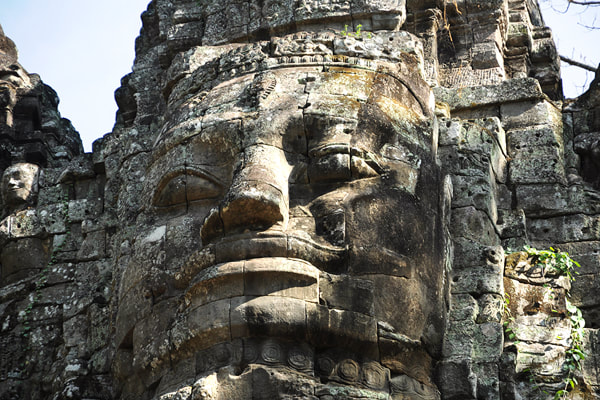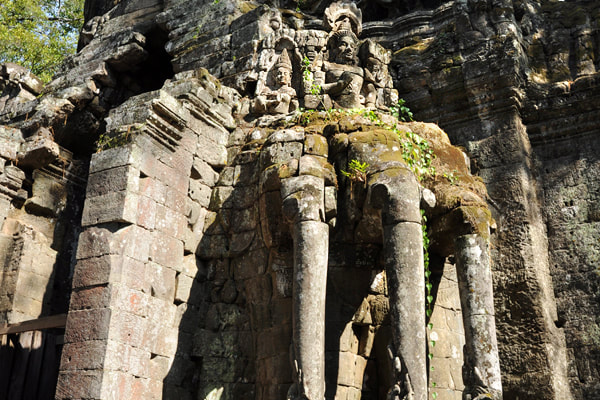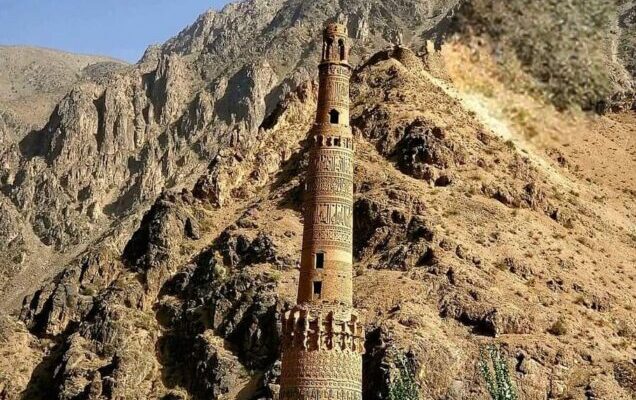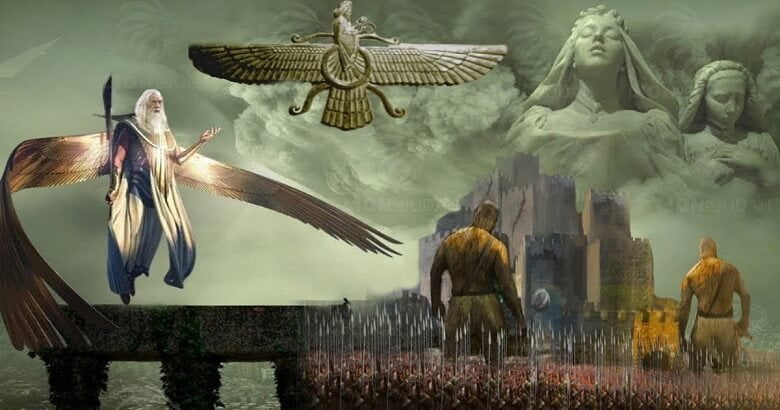In some respects the Gopuram of the North Gate is the best preserved one of Angkor Thom’s five entrance gates. The Indra reliefs on top of the three-headed corner elephants as well as a row of figures further up are in a pretty sound condition.The Vedic god Indra holds a thunderbolt in his lower left hand. Sitting on the elephant heads, he is accompanied by his consorts on each side. Triple elephant trunks as ornamental columns are an invention in Khmer art made at Angkor Thom.


Indra’s three-headed elephant Airavata (called Erawan in Thailand) is one of the treasures born of the churning of the ocean of milk. This scene from the Vishnu mythology is represented by the rows of gods and demons on each side of the causeway, using the Naga serpent as a rope. An alternative theory about the meaning of the causway sculptures was put forth by Bisselier. It says that the Gopurams and causeways show Indras’s victory over the demons. According to this interpretation the city of Angkor Thom is an earthly representation of Indra in Tavatimsa Heaven.

By the way, the four monumental faces at each of Angkor Thom’s five city gates were not part of the first construction, but added a few years or decades later on.
All five ciy gates have causeways built of laterite crossing the 100 m wide moat. The North Gate’s balustrades of Naga-carrying giants, though restored, are less well preserved than at the South Gate. Most giant sculptures are headless at the northern causeway to Angkor Thom.

The most picturesque photo of this Angkor Thom city gate can be taken with the roots of a tree to the south-west of the Gopuram.
The North Gate is crossed by the Grand Circuit road, but only few buses stop here. So it remains to be a rather tranquil area.
The early afternoon hours are good for a visit. Do not come without ticket though it might be possible to avoid all checkpoints on the way to this gate.


